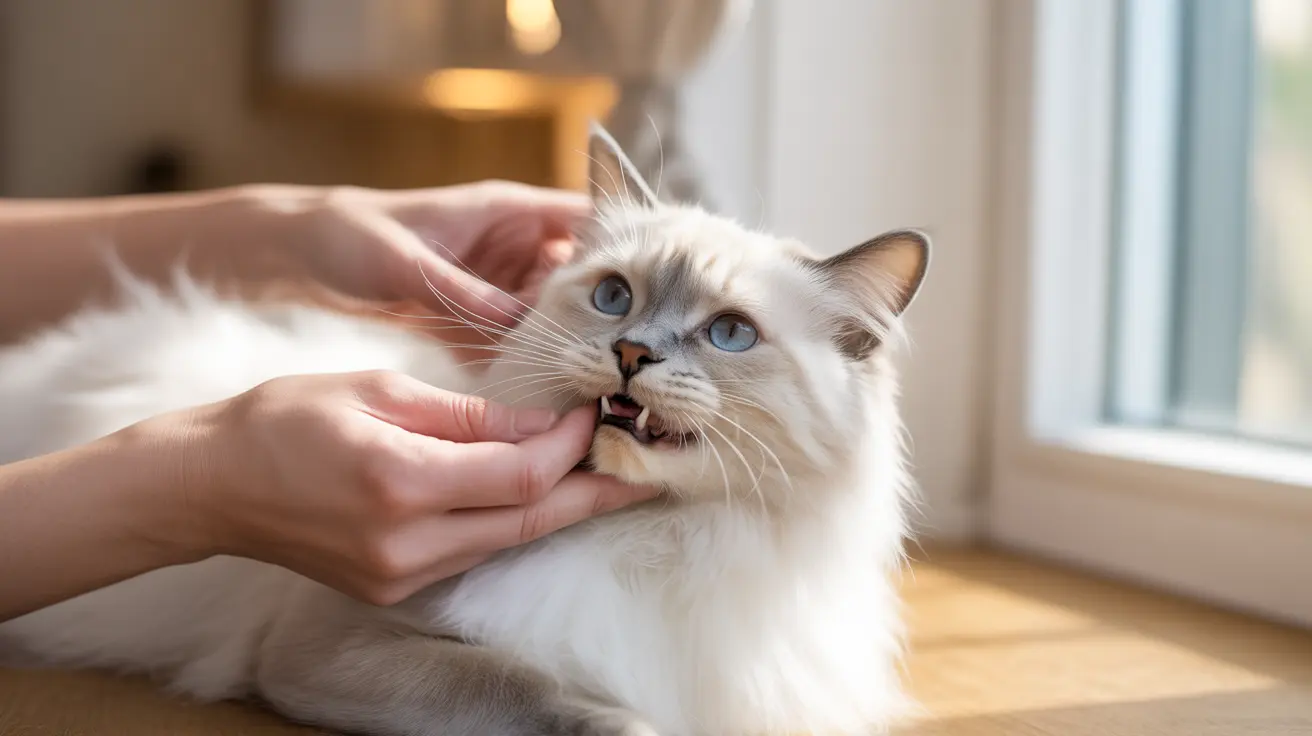Understanding Ragdoll Cat Health
Ragdoll cats, beloved for their striking blue eyes and gentle personalities, are generally healthy cats with impressive lifespans of 15-17 years. However, like many purebred cats, they're predisposed to certain health conditions that every current or prospective owner should understand.
These magnificent felines require specific health monitoring and preventive care to ensure they live long, healthy lives. Let's explore the most common health challenges Ragdoll cats face and learn how to identify, prevent, and manage these conditions effectively.
Hypertrophic Cardiomyopathy (HCM)
Hypertrophic cardiomyopathy stands as the most serious hereditary health concern for Ragdoll cats. This heart condition causes the heart muscle to thicken abnormally, potentially leading to heart failure if left undetected.
- Lethargy and weakness
- Difficulty breathing
- Sudden collapse or fainting
- Loss of appetite
- Rapid breathing when at rest
Regular cardiac screenings and genetic testing can help detect HCM early. Many veterinarians recommend annual echocardiograms starting at age two for Ragdolls.
Polycystic Kidney Disease (PKD)
PKD affects many Ragdolls, causing multiple cysts to develop in the kidneys. This progressive condition typically manifests around age seven but can be detected earlier through genetic testing.
- Increased thirst and urination
- Poor appetite
- Weight loss
- Lethargy
- Vomiting
Weight Management and Joint Health
Ragdolls are large cats naturally, but their laid-back nature makes them prone to obesity. Excess weight can lead to serious joint problems and exacerbate other health issues.
- Portion-controlled feeding
- Regular exercise
- Interactive play sessions
- Monitoring treat intake
- Regular weigh-ins at vet visits
Urinary System Concerns
Ragdolls can be susceptible to various urinary tract issues, including infections and bladder stones. Male cats are particularly at risk for urinary blockages, which constitute a medical emergency.
- Providing fresh water sources
- Feeding wet food
- Using appropriate litter boxes
- Regular veterinary check-ups
Dental and Grooming Needs
Their long coat requires regular maintenance to prevent matting and reduce hairball formation. Additionally, Ragdolls need routine dental care to prevent periodontal disease, which can affect their overall health.
- Weekly brushing sessions
- Regular dental cleaning
- Professional grooming as needed
- Nail trimming
- Ear cleaning
Frequently Asked Questions
What are the most common hereditary health issues in Ragdoll cats, and how can they be detected early?
The most common hereditary issues are HCM and PKD. Early detection involves genetic testing, regular veterinary check-ups, and cardiac screenings. Annual echocardiograms and kidney function tests are recommended for early detection.
How can I prevent and manage obesity and joint problems in my Ragdoll cat?
Maintain a healthy weight through measured feeding, regular exercise, and interactive play sessions. Consider using food puzzles and encouraging climbing activities. Regular vet check-ups help monitor weight and joint health.
What signs indicate urinary tract infections or bladder stones in Ragdoll cats, and what treatments are available?
Watch for frequent urination, straining in the litter box, blood in urine, or crying while urinating. Treatments may include antibiotics, special diets, increased water intake, and in severe cases, surgery.
How often should I take my Ragdoll cat for veterinary check-ups to monitor for health problems like HCM or PKD?
Schedule comprehensive check-ups every 6-12 months, with more frequent visits for seniors or cats with existing conditions. Annual cardiac screenings are recommended after age two.
What are effective ways to reduce hairball problems and manage allergies in Ragdoll cats?
Regular grooming, specialized hairball-control food, and dietary supplements can help manage hairballs. For allergies, work with your vet to identify triggers and develop an appropriate management plan, which may include special diets or medications.
Conclusion
While Ragdoll cats face several potential health challenges, most can be effectively managed through proactive care, regular veterinary visits, and early intervention. Understanding these common health issues helps owners provide better care and ensure their Ragdolls live long, healthy lives.
Remember that every cat is unique, and working closely with a veterinarian to develop a personalized health care plan is essential for optimal well-being.






